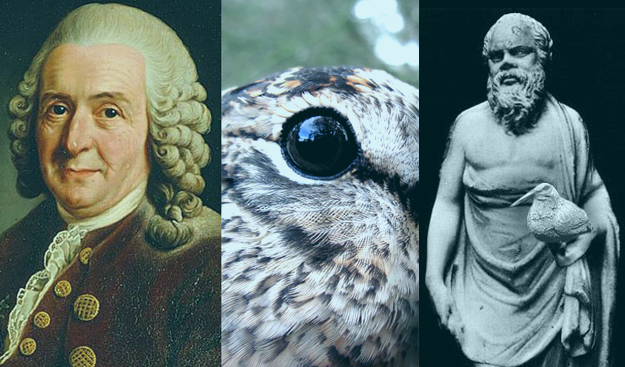
The woodcock’s Linnaean tag is Scolopax minor, named that way by Linnaeus himself. He didn’t go to a lot of trouble: scolopax is Latin for “woodcock,” which in turn comes from the word askalopas, which is ancient Greek for...“woodcock.” This is a little annoying. Look at our nice expressive word, from Old English wuducoc. That’s wudu meaning “wood” and coc. Looks a little like a chicken, and it scoots around in the forest: woodcock. Good work, dead guys.
When you see a jumble like askalopas, it’s pretty clear that some dusty naming story is happening in there, too. But in this case it seems nobody knows exactly what it is. Which is curious, since pinning the exact origin of the name of a bird you’ve never heard of that appears hardly anywhere in the entire Greek literature is precisely the kind of thing etymologists will knife each others’ necks out about.
Enter my friend J.P. Bernbach. A writer and classicist, J.P. is my go-to guy for Greek. His own Linnaean tag is Flagellum respublicani. He turned his nose up at the suggestion that the origin might be kicking around in a word we actually use in English, scolecophagous, which breaks down in Greek to “worm-eater.” The sound shifts are unconvincing. “And that basically describes every bird you see on the ground.”
Then he riffed for a few minutes and came up with two etymologies, each perfectly viable, each with a different story in it. The first: skoli + opos (σκολι-ωπος) which could mean “skew-eyed” or, with a bit of stretching, “looking askance.” The other is skalops (σκαλοψ), a word used also for moles which breaks down to “dig-face.” This is amazing convergence, and amazing work, considering that J.P. didn’t know (as you do if you read the post) that the woodcock’s eyes are so high on its head it sees backwards, and it spends most of its time beak-deep in dirt.
I call the Scolopax Conundrum a step toward solved. If you know better, feel free to send me angry email.
